california native plants, urban-scale permaculture, long tangents | USDA zone 10a, sunset climate zone 17 | quercus'd up white boy | bee microkitchen proprietor | follow for more soft chaparral
Don't wanna be here? Send us removal request.
Photo

Tumbling Raspberries - Jacques Soulas
French , b. 1957 -
Oil on linen , 40 x 40 in.
9K notes
·
View notes
Text
TIL the reason you don’t find much Lyme’s Disease in California is not because we don’t have Ticks, or Lyme Disease Vectors; but rather: because the Western Fence Lizard (if you live anywhere in California this is your regular Garden Variety Lizard) has adapted a passive immune response that makes their blood lethal to Lyme Disease Bacteria. Any Tick that feeds on one gets its gut cleansed of Lyme Disease as a side effect.
Fucking neat.
27K notes
·
View notes
Text
#PLUOT ERASURE?? NOT EVEN A STONEFRUIT CROSS CATEGORY?? pls#that said!#a really ripe peach is a thing of glory#unfortunately peaches are ripe for about five minutes each; it is borne from the tree teetering on the edge of rot#so they’re hard to find because they’re logistically difficult#also they’re hard to cut because it’s so soft it will self-destruct in a spray of juice if you touch it with your knife#median cherry/plum/pluot is better. harder to mess up.
2K notes
·
View notes
Text
"The second best time to plant a tree is now"
But what if I accidentally plant an evil tree
#if allowed to crossbreed: invasive AND giant thorns#even if it stays put: smells awful; Problematic (tm) branch angles
128 notes
·
View notes
Text

Saw this anti-wasp screenshot. Fixed it for you :)
#was rebuffed the other day while advocating for our friend and protector the parasitoid wasp#just because her life cycle is ‘like a horror movie’ doesn’t mean i don’t support her!
1K notes
·
View notes
Text
My mother in law bought us a cookbook from an iconic San Francisco restaurant (I have never heard of this restaurant and she’s never mentioned it before.)
I am going to end up on the news about it.

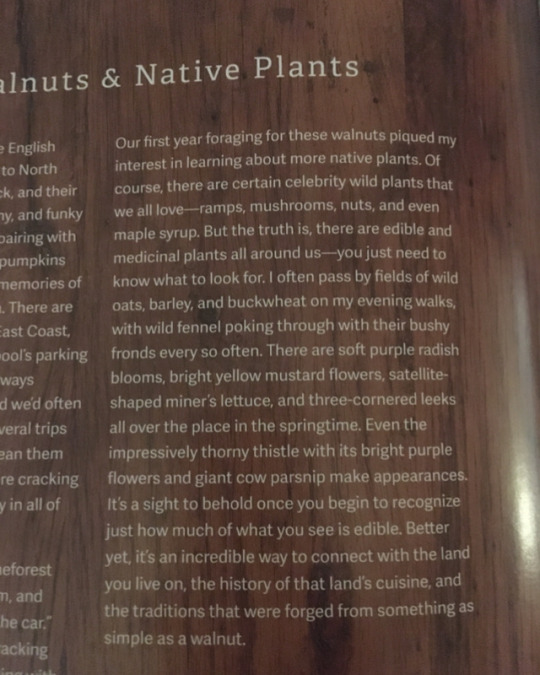
#good explainer#i was reading the original screenshot like ‘gork are you perhaps foraging in a parking lot’#i thiiiiink the california native walnut(s) are edible? but idk if they’re. good.
28 notes
·
View notes
Text
1K notes
·
View notes
Note
The really cool thing about hydrangeas is that they can be blue, pink, or purple based primarily on the pH of the soil. A free science experiment in every plant.
Omg this is so cool I didn’t know this! I wonder if I can do this experiment with students
20K notes
·
View notes
Text
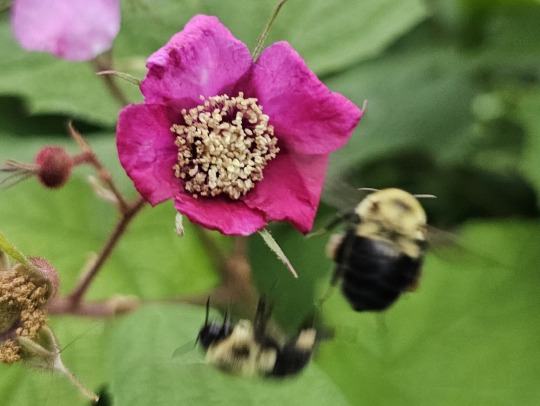
I'm gonna cry I was watching a bumblebee feeding at this flower and at the exact moment I took a picture a second bee just bodyslammed the first one off😭
364 notes
·
View notes
Text
this website lets you listen to the sounds of all different forests around the world
50K notes
·
View notes
Text
hey what the fuck
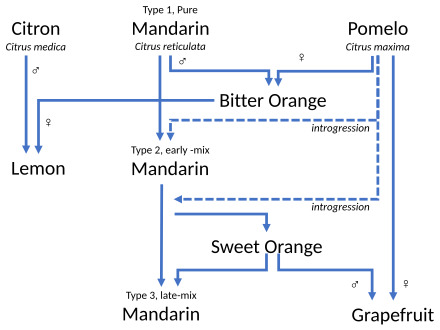
what is this lemon cartomancy bullshit
1K notes
·
View notes
Text
the problem with yard work is that once I start I go into Gethenian dothe and don’t stop until I’m done. if I don’t put on gardening gloves before I so much as touch a weed then I won’t be able to stop later and will lose half the skin on my hands. which I need for gay sex.
130 notes
·
View notes
Text

My mom left an eviction notice for the carpenter bees burrowing into our porch
83K notes
·
View notes
Text
Apricot jumpscare
I came home from a trip on Sunday to find my driveway, patio, flowerbeds, and car speckled with rapidly expiring orange spheroids.
This is a precisely annual occurrence. In late June, I have a trip; in late June, the apricot tree yields; ergo, during that trip there is, I presume, a brief window when the apricots are ripe but the tree has not yet seen fit to fling them across every nearby surface. But I once again have missed the window, so the apricot race has started and I am already behind. Each must be hunted down, picked up, washed, cut up, and packed into the freezer, before it rots, or is run over by a car and smears itself into our driveway, or worse yet, hangs out on top of the car for several hours and then, when you least expect it, rolls off the car and into traffic. I still have a voice recording from S this time last year:
It’s like the ticking time bomb of the produce world. It’s like in Stardew Valley when all your ancient fruit wine comes due at once, and you have to rush to sell it all the same day, except this isn’t downstream of my objectively deranged playstyle, it’s just how fruit trees work. It’s like if an Easter egg hunt assigned you chores afterward.
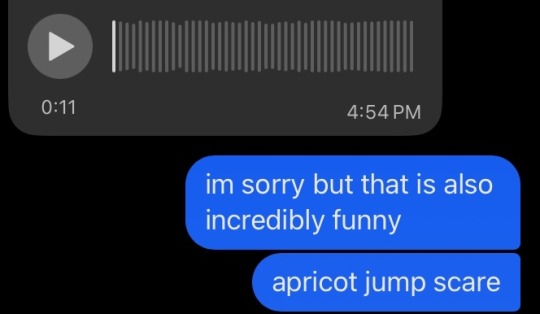
Yesterday’s take was twenty seven apricots; I filled a gallon ziploc. Today I netted twelve. This does not include the four or more apricots a day we eat out of hand.
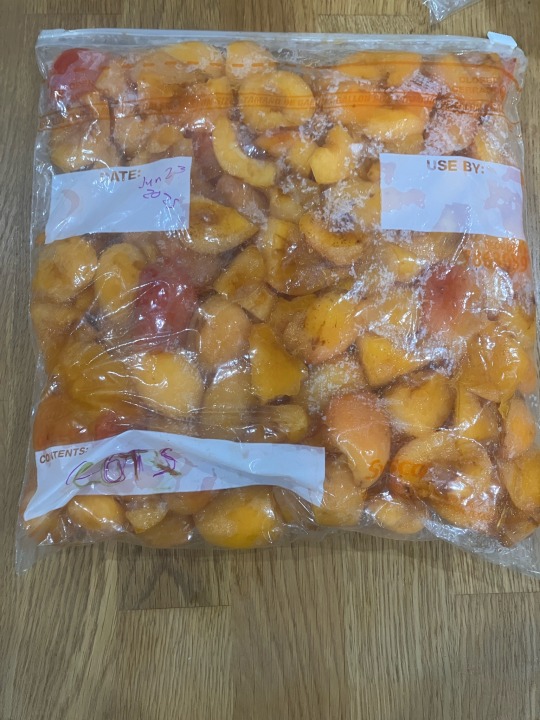
The tree is somehow still full, bulging ominously with fruits.
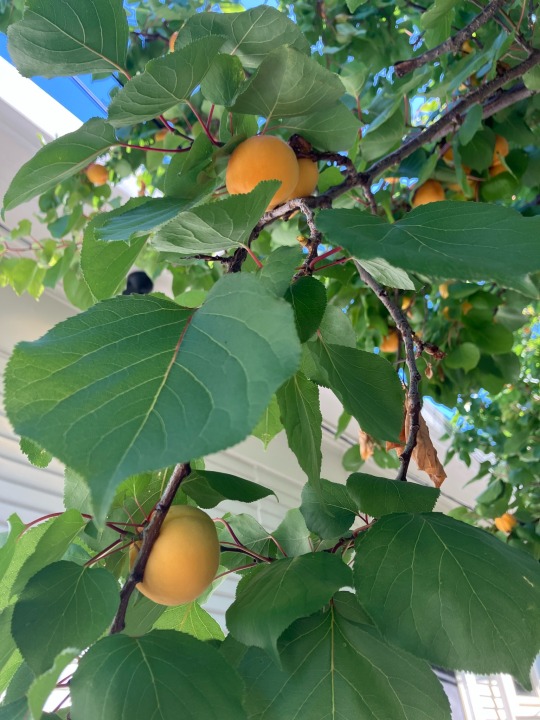
Blenheim apricot season is upon us. God help us all.
30 notes
·
View notes
Text
while literally every other plant in my garden has been Struggling---given that the weather has been cold and rainy for most all of May---the cilantro took this opportunity to bust out like crazy. So we're making cilantro pesto because dehydrators cost too much and at least I can freeze the pesto.
223 notes
·
View notes

